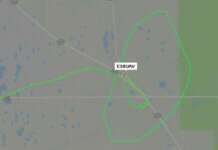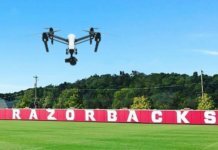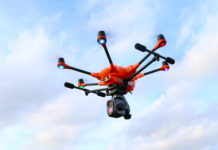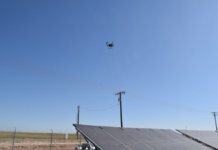Drones are giving scientists deeper insights into how important the Ostional National Wildlife Refuge on Costa Rica’s Pacific coast is for sea turtle nesting, says newly published research from Duke University and the University of North Carolina at Chapel Hill (UNC-CH).
According to a press release from Duke, scientists from Duke and UNC-CH flew an eBee senseFly fixed-wing drone equipped with a near-infrared camera over a three-kilometer stretch of nearshore water twice daily – morning and evening – on four consecutive days during a mass-nesting event, or arribada, in August 2015. By analyzing the captured images, they identified 684 confirmed turtle sightings and 409 probable sightings. They also estimated that turtle densities there may reach as high as 2,086 animals per square kilometer during peak nesting season.
The researchers published their peer-reviewed paper on Dec. 18, 2017, in Scientific Reports. Duke says this is the first study to use unmanned aircraft systems (UAS) to estimate the abundance of sea turtle populations.
“These are extraordinary numbers, much higher than any of us anticipated,” says Seth Sykora-Bodie, a PhD student at Duke’s Nicholas School of the Environment, who co-led the study with Vanessa Bézy, a PhD candidate at UNC-CH.
“Our findings confirm drones can be used as a powerful tool to study sea turtle abundance at sea and reveal incredible densities of turtles in Ostional’s nearshore habitat,” says Bézy. “The development of this methodology provides vital new insights for future conservation and research.”
Equipping the drone with a high-resolution digital camera with near-infrared vision and flying it just 90 meters above the ocean expanded the field of view and significantly increased image clarity, allowing the researchers to detect many turtles swimming just below the water’s surface, says Duke. Observers relying only on visual sightings made from boats could easily miss these submerged animals because of their angle of view and the clarity of the water, according to Sykora-Bodie.
Traditionally, scientists have collected this type of abundance data using mark-and-recapture studies, in-water surveys, and censuses of turtles observed on nesting beaches. These methods can be costly and time-consuming, incur potential risks to both the observers and the animals, and increase the likelihood that turtles may be missed or double-counted, according to the researchers.
The new pilot study shows that using camera-equipped drones provides a safe, cost-effective and scientifically robust alternative, says Duke.
“Because of the clarity of the images we can collect – and the greater flexibility we have in where, when and how we collect them – this approach provides us with better data for understanding population status and trends, which can then be used to inform management decisions and develop conservation measures tailored to individual populations, locations and time frames,” Sykora-Bodie explains.
Olive ridleys are classified as vulnerable on the IUCN Red List of Threatened Species. One of the chief threats they face is being accidentally caught and killed by hooks and other fishing gear used by longline and trawl fisheries, says Duke.
Using methods that scientists regularly employ for estimating the population abundance of marine species based on surface sightings in traditional surveys, Sykora-Bodie and his colleagues calculated a low-end daily estimate of up to 1,299 turtles per square kilometer in the surveyed area and a high-end estimate of up to 2,086 turtles. Long-term surveys, coupled with further research on olive ridleys’ dive profile – how deep they dive and how long they remain underwater – will be needed to refine these estimates, says Duke.
Sykora-Bodie and Bézy’s co-authors on the new study were Kenneth J. Lohmann, the Charles P. Postelle Jr. Distinguished Professor of biology at UNC-CH; David W. Johnston, associate professor of the practice of marine conservation ecology at Duke; and Everette Newton, a Ph.D. student in Johnston’s lab.
Funding for the study came from a National Science Foundation (NSF) grant to Lohmann and an NSF Graduate Research Fellowship to Bezy. The Ostional National Wildlife Refuge and the Costa Rican Ministry of Environment provided logistical support and permits.











Leave a Comment
Your email address will not be published. Required fields are marked *